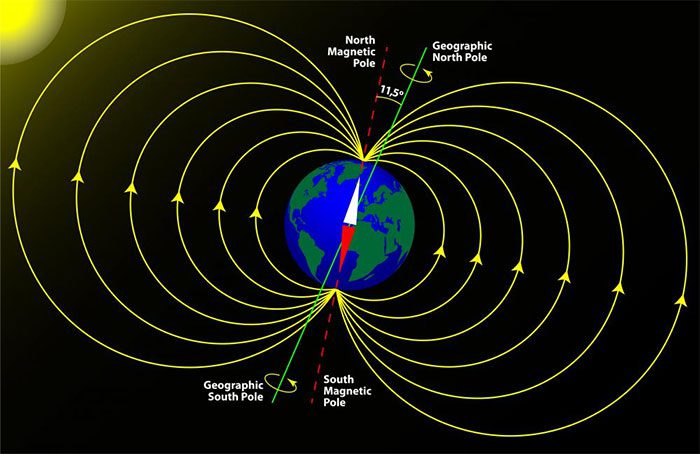Why is the Earth’s Magnetic North Pole “fleeing” to Siberia (Russia)? After many years of puzzling over this phenomenon, scientists may finally understand why.
Since it was first discovered by scientists in the 1830s, the Earth’s Magnetic North Pole has wandered approximately 2,250 kilometers across the upper sections of the Northern Hemisphere, from Canada to Siberia.
Between 1990 and 2005, the speed of this “escape” accelerated from below 15 kilometers per year to about 50-60 kilometers per year.
The Earth’s Magnetic North Pole plays a crucial role in human navigation.

Scientists have explained why the Magnetic North Pole is moving to Siberia – (Photo: CULTURAL WORLD).
A study published in the journal Nature Geoscience argues that these changes can be explained by the collision between two “magnetic blobs” of molten material within the Earth, causing a massive shift in its magnetic field.
The Magnetic North Pole is the point where the Earth’s magnetic field points vertically downwards. This phenomenon is determined by molten iron flowing within the Earth through convection currents.
The recent shift towards Siberia appears to be due to a bright spot in the flow pattern inside the Earth that occurred from 1970 to 1999. This change caused the Canadian blob to stretch and diminished its influence on the magnetic field, prompting the Magnetic North Pole to sprint towards Siberia.
Dr. Phil Livermore, the lead author of the study on the Earth’s magnetic field and environment at the University of Leeds in the UK, explains: “What we found is that the position of the Magnetic North Pole is controlled by two magnetic regions: one beneath Canada and one beneath Siberia. They act like a tug-of-war affecting the pole’s position.”
He added: “Historically, the Canadian region has won the ‘battle’, which is why the Magnetic North Pole has been centered in Canada. But in recent decades, the Canadian area has weakened while the Siberian region has strengthened a bit. That explains why the Magnetic North Pole has suddenly accelerated away from its historical location.”
The researchers reached this conclusion by using data collected from the European Space Agency’s (ESA) Swarm satellites.
This trio of satellites orbits the Earth and accurately measures the magnetic signals emitted from the Earth’s core, mantle, crust, and oceans, as well as from the ionosphere and magnetosphere.
Monitoring the Earth’s magnetic field is not only vital for abstract scientific research; the magnetic field also serves as a geomagnetic energy shield that protects the Earth from destructive solar radiation. It is also essential for many navigation systems, from humble compasses to GPS systems.





















































